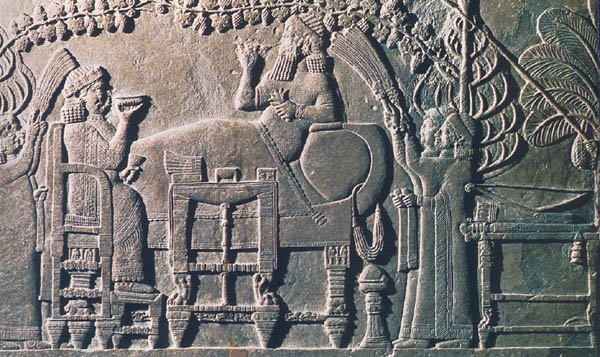Image Details

British Museum
A bed fit for a king. The Assyrian ruler Assurbanipal (668–627 B.C.), center above, reclines on a plush royal divan during a feast celebrating the defeat, in about 646 B.C., of the rebellious Elamites, a people who lived east of the Tigris River. Four attendants fan him and Queen Ashur-sharrat, left, as they sip from decorated bowls in this relief from the North Palace of Nineveh. Beds and thrones—even whole houses and palaces—from the ancient Near East were often decorated or even completely overlaid with precious materials such as ivory or silver. Surprising as it may seem today, iron was, during the Late Bronze Age, considered as worthy of adorning an important piece of furniture as were ivory and silver. It is therefore perfectly understandable, author Millard argues, that Deuteronomy 3:11 would make note of an unusually large iron-ornamented bed belonging to Og, monarch of the trans-Jordanian kingdom of Bashan.
